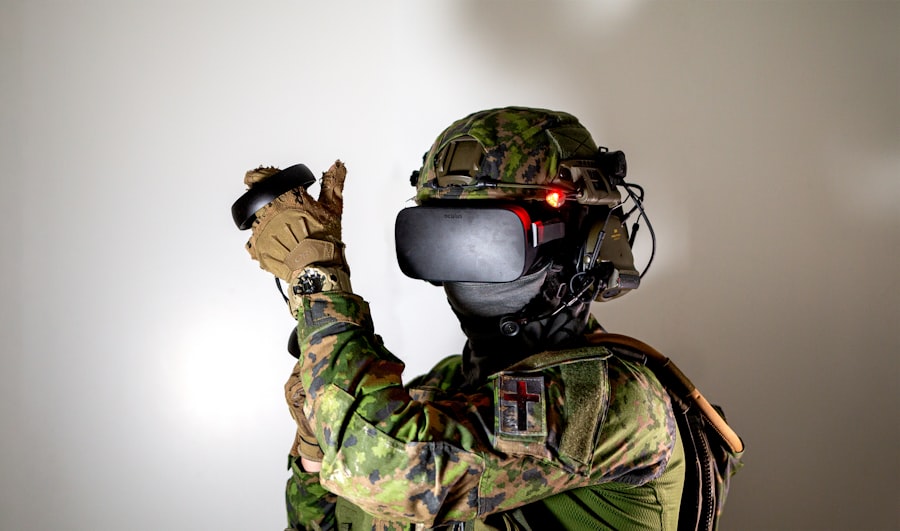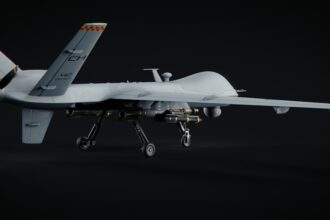Technological asymmetry in warfare refers to the disparity in military capabilities and technological advancements between opposing forces. This phenomenon has become increasingly pronounced in modern conflicts, where one side may possess advanced weaponry, surveillance systems, and cyber capabilities, while the other relies on outdated methods and equipment. The implications of such imbalances are profound, as they can dictate the outcomes of conflicts, influence strategic decisions, and reshape the nature of warfare itself.
As nations invest heavily in research and development, the gap between technologically advanced militaries and those with limited resources continues to widen, raising questions about the future of global security. The rise of technological asymmetry has not only transformed traditional battlefields but has also introduced new dimensions to warfare. The integration of cutting-edge technologies such as artificial intelligence, drones, and cyber capabilities has altered the landscape of military engagement.
As a result, understanding the dynamics of technological asymmetry is crucial for policymakers, military strategists, and scholars alike. This article will explore historical examples of technological asymmetry, the role of cyber warfare, the impact of drones, and the ethical implications that arise from these advancements.
Key Takeaways
- Technological asymmetry in warfare refers to the imbalance of technological capabilities between opposing forces, leading to strategic advantages for one side.
- Historical examples, such as the use of gunpowder in medieval China and the atomic bomb in World War II, demonstrate the impact of technological asymmetry on warfare.
- Cyber warfare plays a significant role in technological asymmetry, as it allows for covert attacks and disruption of critical infrastructure.
- Drones and unmanned aerial vehicles have revolutionized warfare by providing surveillance, precision strikes, and reduced risk to human personnel.
- Artificial intelligence and machine learning are increasingly being utilized in warfare for tasks such as autonomous decision-making and predictive analysis.
Historical Examples of Technological Asymmetry
Throughout history, instances of technological asymmetry have played pivotal roles in shaping military outcomes. One notable example is the American Civil War, where the Union’s industrial capabilities provided it with a significant advantage over the Confederacy. The North’s ability to produce advanced weaponry, such as rifled muskets and ironclad warships, allowed it to dominate the battlefield.
This disparity in industrial capacity not only influenced the tactics employed by both sides but also determined the war’s eventual outcome. The Union’s technological superiority was a decisive factor that contributed to its victory. Another striking example can be found in World War II, particularly during the early stages of the conflict.
The German Blitzkrieg tactics showcased a remarkable integration of technology and strategy, utilizing tanks, aircraft, and coordinated infantry assaults to achieve rapid victories against less technologically advanced opponents. The swift fall of France in 1940 demonstrated how a technologically superior force could exploit its advantages to achieve overwhelming success. Conversely, the Allies’ eventual victory was also a result of their ability to adapt and innovate in response to German advancements, highlighting the dynamic nature of technological asymmetry in warfare.
The Role of Cyber Warfare in Technological Asymmetry

In recent years, cyber warfare has emerged as a critical component of technological asymmetry. Nations with advanced cyber capabilities can launch attacks that disrupt critical infrastructure, steal sensitive information, and manipulate public perception. For instance, state-sponsored hacking groups have targeted government institutions, financial systems, and even electoral processes in various countries.
This form of warfare allows technologically advanced nations to exert influence without engaging in traditional military confrontations. The ability to wage war in cyberspace has leveled the playing field for smaller nations or non-state actors who may lack conventional military strength but can leverage cyber tools to achieve their objectives. The implications of cyber warfare extend beyond immediate tactical advantages; they also raise concerns about national security and global stability.
As nations increasingly rely on interconnected systems for their operations, vulnerabilities in cyberspace can have cascading effects on economies and societies. The 2017 WannaCry ransomware attack serves as a stark reminder of how cyber threats can disrupt essential services and create chaos on a global scale. In this context, understanding the role of cyber warfare in technological asymmetry is vital for developing effective defense strategies and ensuring resilience against potential attacks.
The Impact of Drones and Unmanned Aerial Vehicles
| Metrics | Data |
|---|---|
| Number of drones in use | Over 1.7 million |
| Market size | Estimated to reach 42.8 billion by 2025 |
| Commercial applications | Includes agriculture, construction, and delivery |
| Regulatory challenges | Concerns about safety, privacy, and airspace management |
| Environmental impact | Reduced carbon emissions and wildlife disturbance |
Drones and unmanned aerial vehicles (UAVs) have revolutionized modern warfare by providing unprecedented surveillance capabilities and precision strike options. Their deployment has created a significant technological asymmetry between nations that possess these advanced systems and those that do not. For example, the United States has utilized drones extensively in counterterrorism operations, allowing for targeted strikes against high-value targets with minimal risk to personnel.
This capability has enabled the U.S. military to project power across vast distances while minimizing casualties on its side. However, the proliferation of drone technology has also led to concerns about its misuse by non-state actors and rogue states.
Groups such as ISIS have employed drones for reconnaissance and even offensive operations, demonstrating that access to this technology is no longer limited to traditional military powers. This democratization of drone technology raises questions about accountability and regulation in warfare. As more actors gain access to UAVs, the potential for asymmetric conflicts increases, necessitating a reevaluation of existing military strategies and international norms governing their use.
The Use of Artificial Intelligence and Machine Learning in Warfare
Artificial intelligence (AI) and machine learning are at the forefront of technological advancements in warfare, offering new tools for analysis, decision-making, and operational efficiency. Militaries around the world are investing heavily in AI-driven systems that can process vast amounts of data to identify patterns, predict outcomes, and enhance situational awareness. For instance, AI algorithms can analyze satellite imagery to detect enemy movements or assess battlefield conditions in real-time.
This capability provides a significant advantage to technologically advanced forces that can leverage AI for strategic planning and execution. However, the integration of AI into military operations also raises ethical concerns regarding autonomy and accountability.
Questions arise about who is responsible for actions taken by AI-driven systems and how to ensure compliance with international humanitarian law. As nations race to develop AI capabilities for military applications, addressing these ethical implications becomes paramount to prevent unintended consequences and maintain global stability.
The Ethical and Legal Implications of Technological Asymmetry

The ethical and legal implications of technological asymmetry in warfare are complex and multifaceted. As militaries increasingly rely on advanced technologies such as drones and AI, questions arise about compliance with international humanitarian law (IHL) and the principles of distinction and proportionality. The ability to conduct precision strikes using drones may reduce civilian casualties compared to traditional warfare; however, it also raises concerns about accountability when mistakes occur or when civilian infrastructure is inadvertently targeted.
Moreover, the use of cyber warfare introduces additional ethical dilemmas. Cyber attacks can disrupt essential services such as healthcare or emergency response systems, potentially leading to loss of life or suffering among civilian populations. The challenge lies in establishing clear legal frameworks that govern the use of emerging technologies while ensuring that ethical considerations are prioritized.
As nations navigate these complexities, fostering dialogue among stakeholders—including governments, international organizations, and civil society—will be essential for developing norms that promote responsible behavior in warfare.
The Importance of Defense and Security in the Digital Age
In an era characterized by rapid technological advancements, defense and security have taken on new dimensions that extend beyond traditional military capabilities. The digital age has transformed how nations approach security challenges, necessitating a comprehensive understanding of both physical and cyber threats. As adversaries increasingly exploit vulnerabilities in cyberspace, nations must prioritize investments in cybersecurity measures to protect critical infrastructure and sensitive information from malicious actors.
Furthermore, collaboration among nations is crucial for addressing shared security challenges in the digital realm. International partnerships can enhance collective defense efforts by sharing intelligence, best practices, and resources to counter emerging threats effectively. In this context, fostering resilience within societies becomes equally important; public awareness campaigns can empower individuals to recognize potential cyber threats and adopt safe online practices.
By embracing a holistic approach to defense and security in the digital age, nations can better navigate the complexities posed by technological asymmetry.
The Future of Technological Asymmetry in Warfare
The future of technological asymmetry in warfare is likely to be shaped by ongoing advancements in various fields such as artificial intelligence, robotics, biotechnology, and quantum computing. As these technologies continue to evolve, they will create new opportunities for both state and non-state actors to gain advantages on the battlefield. For instance, developments in quantum computing could revolutionize cryptography and data analysis, potentially altering the balance of power among nations.
Moreover, as emerging technologies become more accessible, smaller nations or non-state actors may find innovative ways to leverage them for asymmetric advantages. This trend could lead to an increase in unconventional warfare tactics that challenge traditional military strategies. Consequently, militaries must remain agile and adaptive to respond effectively to evolving threats while maintaining ethical standards in their operations.
Strategies for Addressing Technological Asymmetry
Addressing technological asymmetry requires a multifaceted approach that encompasses policy development, international cooperation, and investment in research and development. Nations must prioritize collaboration with allies to share knowledge and resources aimed at countering emerging threats effectively. Joint exercises that simulate scenarios involving asymmetric warfare can enhance preparedness while fostering interoperability among allied forces.
Additionally, investing in education and training programs focused on emerging technologies will be essential for developing a skilled workforce capable of navigating complex security challenges.
By adopting proactive strategies that emphasize collaboration and innovation, nations can mitigate the risks associated with technological asymmetry.
The Role of International Organizations in Regulating Technological Asymmetry
International organizations play a crucial role in regulating technological asymmetry by establishing norms and frameworks that govern the use of emerging technologies in warfare. Institutions such as the United Nations (UN) have initiated discussions on issues related to autonomous weapons systems and cyber warfare to promote responsible behavior among states. These dialogues aim to foster consensus on ethical standards while addressing concerns about accountability and compliance with international law.
Moreover, international organizations can facilitate cooperation among nations by providing platforms for information sharing and capacity building. Initiatives aimed at enhancing cybersecurity resilience or promoting best practices for responsible AI use can help bridge gaps between technologically advanced states and those with limited resources. By fostering collaboration at the global level, international organizations can contribute significantly to mitigating the risks associated with technological asymmetry.
Navigating the Challenges of Technological Asymmetry in Warfare
Navigating the challenges posed by technological asymmetry in warfare requires a comprehensive understanding of its implications across various dimensions—military strategy, ethics, legal frameworks, and international cooperation. As nations continue to invest in advanced technologies that reshape the nature of conflict, it is imperative for policymakers to prioritize responsible development and deployment practices that uphold ethical standards. The future landscape of warfare will undoubtedly be influenced by ongoing advancements in technology; however, proactive strategies aimed at fostering collaboration among nations can help mitigate risks associated with asymmetric conflicts.
By embracing dialogue among stakeholders—governments, civil society organizations, industry leaders—nations can work together towards establishing norms that promote stability while addressing shared security challenges effectively. Ultimately, addressing technological asymmetry is not merely a matter of military superiority; it requires a commitment to ethical considerations that prioritize human dignity even amidst conflict. As societies grapple with these complexities in an increasingly interconnected world, fostering resilience through education, collaboration, and innovation will be essential for navigating the challenges ahead.
In the rapidly evolving landscape of modern warfare, technological asymmetry plays a crucial role in determining the outcomes of conflicts. This concept refers to the significant technological advantages that one side may possess over the other, often leading to a disproportionate impact on the battlefield. An insightful article that delves into this topic can be found on the In The War Room website. It explores how advancements in technology, such as drones and cyber warfare, are reshaping military strategies and creating new challenges for nations worldwide. For a deeper understanding of these dynamics, you can read more about it here.
FAQs
What is technological asymmetry in warfare?
Technological asymmetry in warfare refers to the imbalance in technological capabilities between opposing forces in a conflict. This imbalance can give one side a significant advantage in terms of weapons, communication systems, intelligence gathering, and other military capabilities.
How does technological asymmetry affect warfare?
Technological asymmetry can have a significant impact on the outcome of a conflict. The side with superior technology may have the ability to dominate the battlefield, disrupt enemy communications, gather intelligence more effectively, and carry out precision strikes with advanced weaponry.
What are some examples of technological asymmetry in warfare?
Examples of technological asymmetry in warfare include the use of drones and unmanned aerial vehicles (UAVs) by one side while the other lacks similar capabilities, the possession of advanced cyber warfare capabilities by one side, or the use of precision-guided munitions and advanced surveillance technology.
How do military forces address technological asymmetry?
Military forces may address technological asymmetry through a variety of means, including developing and acquiring new technologies, forming alliances with technologically advanced countries, investing in research and development, and adapting tactics and strategies to mitigate the impact of technological disadvantages.
What are the ethical implications of technological asymmetry in warfare?
Technological asymmetry in warfare raises ethical concerns related to the use of advanced weaponry, the potential for civilian casualties, and the impact of technological dominance on the balance of power in conflicts. It also raises questions about the responsibility of technologically advanced nations in providing assistance to less advanced forces.




